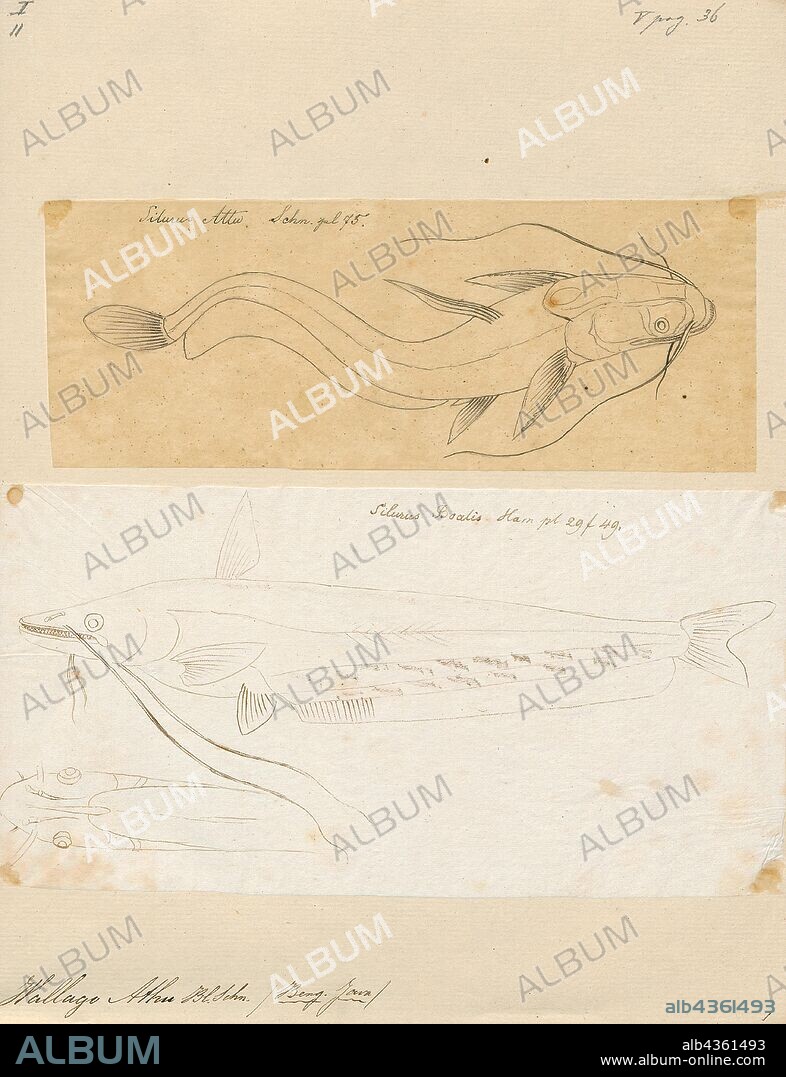alb4361493
Wallago attu, Print, Wallago attu is a freshwater catfish of the family Siluridae, native to South and Southeast Asia. It is commonly known as helicopter catfish or wallago catfish. Some regional designations, such as the Indian Sareng, the Bengal Boal, the Sylheti Gual or the Malaysian and Indonesian Tapah are also occasionally used in English. W. attu is found in large rivers and lakes in two geographically disconnected regions (disjunct distribution), with one population living over much of the Indian Subcontinent and the other in parts of Southeast Asia. The species can reach a total length of 1 m (3 ft 3 in)., 1700-1880.

|
Añadir a otro lightbox |
|
Añadir a otro lightbox |



¿Ya tienes cuenta? Iniciar sesión
¿No tienes cuenta? Regístrate
Compra esta imagen.
Selecciona el uso:

Descripción:
Ver traducción automática
Wallago attu, Print, Wallago attu is a freshwater catfish of the family Siluridae, native to South and Southeast Asia. It is commonly known as helicopter catfish or wallago catfish. Some regional designations, such as the Indian Sareng, the Bengal Boal, the Sylheti Gual or the Malaysian and Indonesian Tapah are also occasionally used in English. W. attu is found in large rivers and lakes in two geographically disconnected regions (disjunct distribution), with one population living over much of the Indian Subcontinent and the other in parts of Southeast Asia. The species can reach a total length of 1 m (3 ft 3 in)., 1700-1880
Crédito:
Album / quintlox
Autorizaciones:
Tamaño imagen:
3680 x 4794 px | 50.5 MB
Tamaño impresión:
31.2 x 40.6 cm | 12.3 x 16.0 in (300 dpi)
 Pinterest
Pinterest Twitter
Twitter Facebook
Facebook Copiar enlace
Copiar enlace Email
Email
